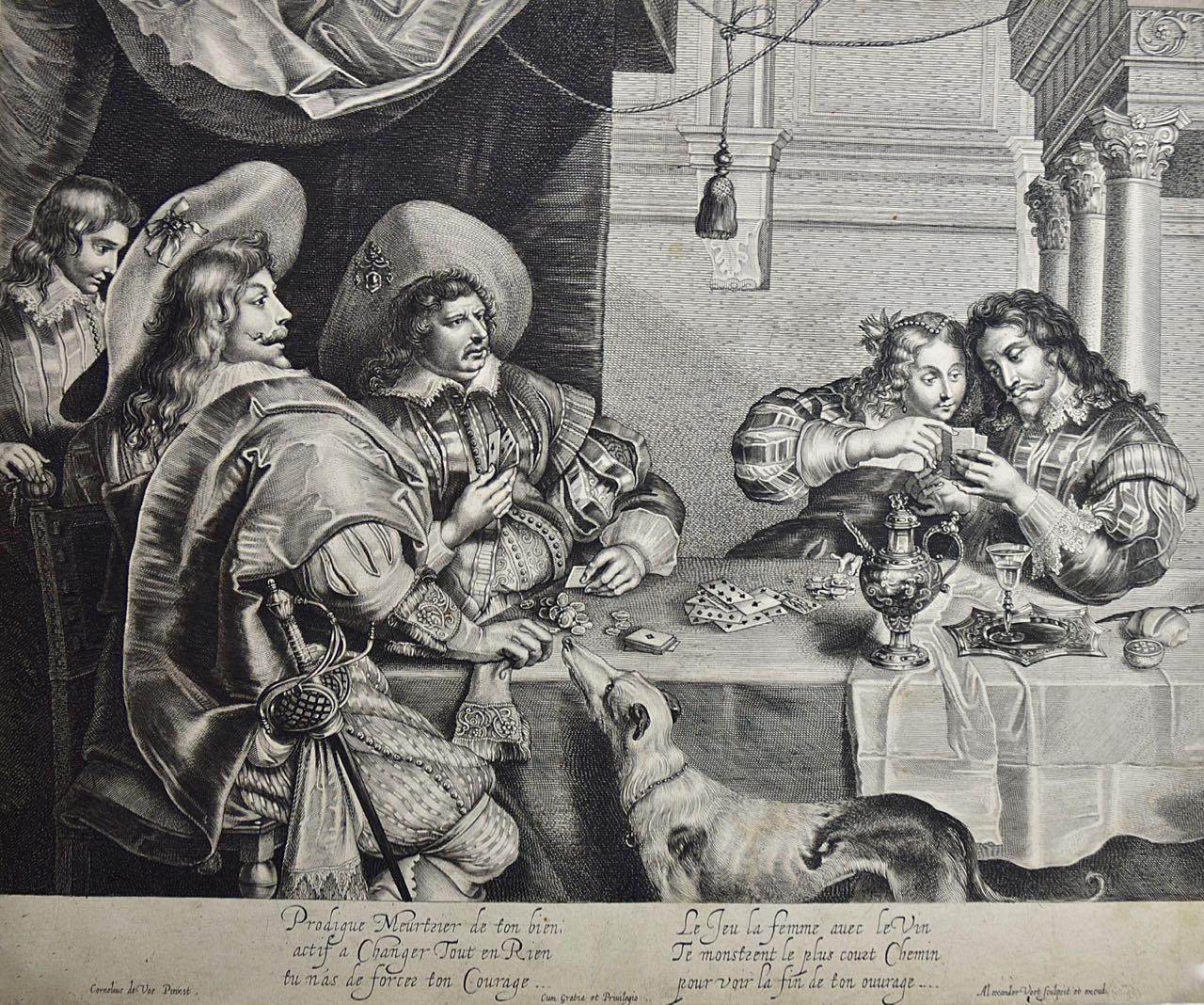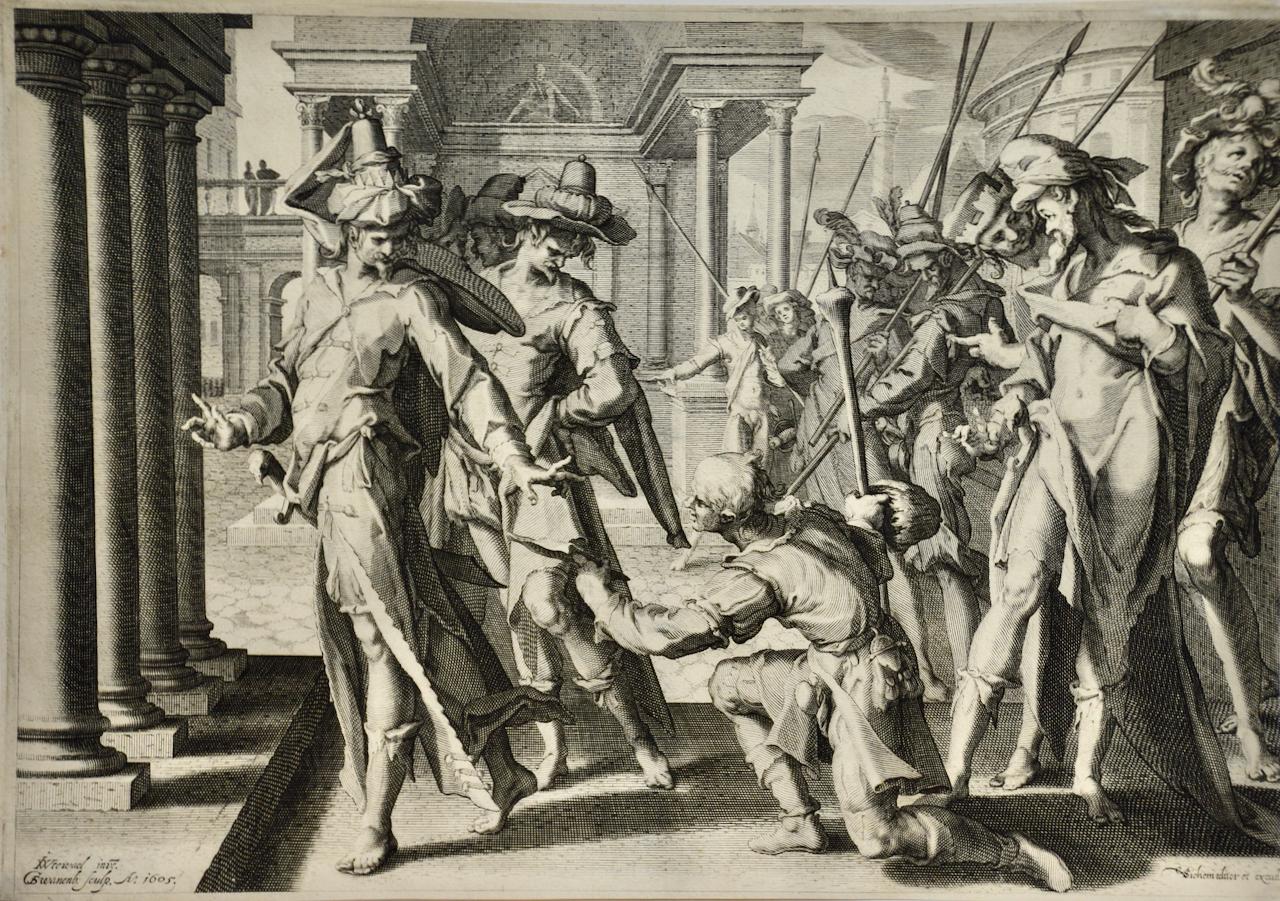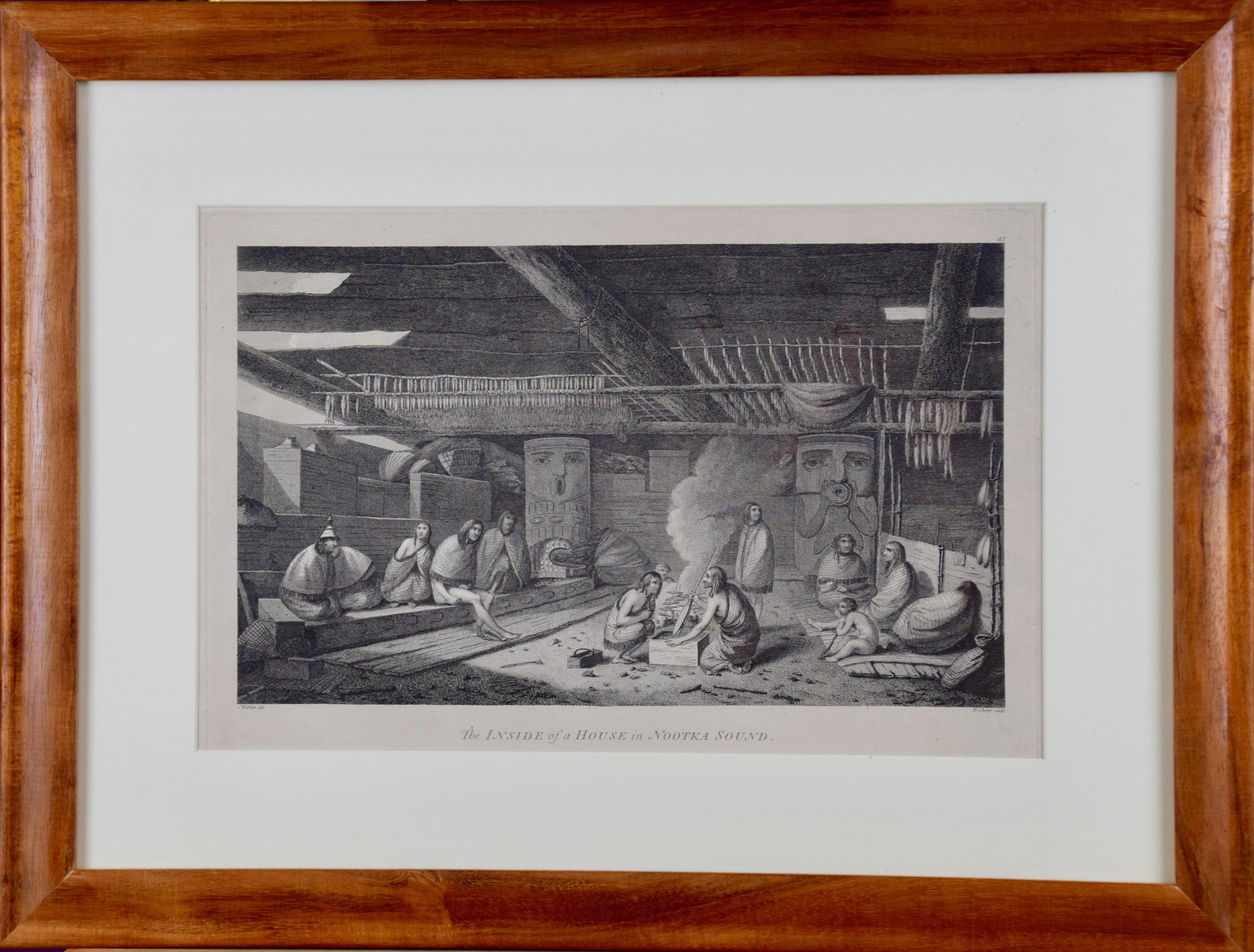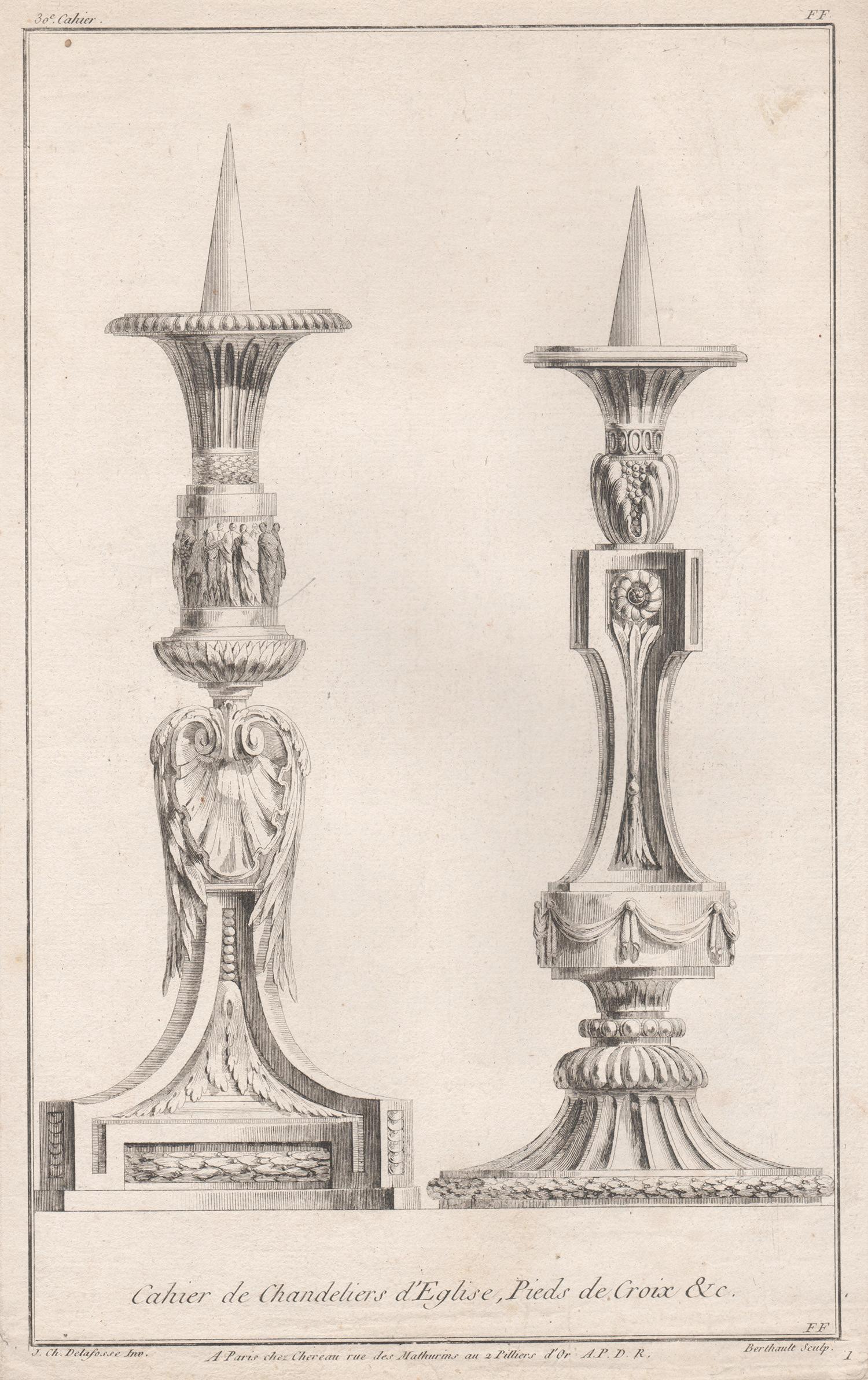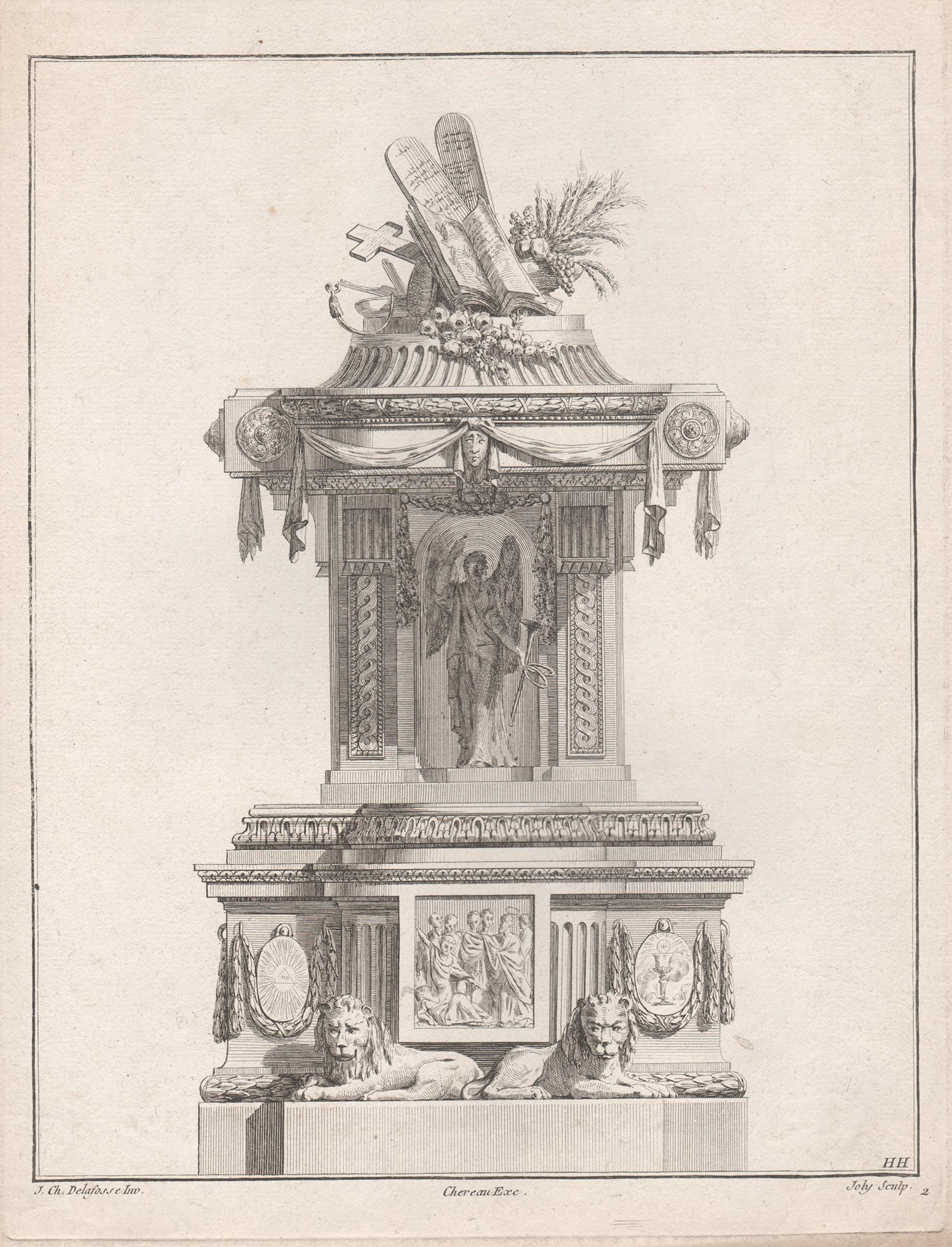Items Similar to Loggie di Rafaele nel Vaticano: 18th Century Hand-colored Engraving by Volpato
Want more images or videos?
Request additional images or videos from the seller
1 of 9
Giovanni Volpato Loggie di Rafaele nel Vaticano: 18th Century Hand-colored Engraving by Volpato1772
1772
About the Item
This is an original 18th century hand-colored copper-plate engraving by Giovanni Volpato after a drawing by Camporesi. It was the frontispiece for volume one of the rare and valuable text "Loggie di Rafaele nel Vaticano", published in Rome in 1772. The book focussed on the 16th century designs of the legendary painter Raphael for portions of the Vatican, in particular Pope Leo X’s gallery. Loggia di Rafaele remains one of the most sought after examples of architectural studies including arches, ceilings, pilaster columns, and doors. A portrait of Raphael in profile is seen in the engraving in a medallion over the entrance to the corridor. Two men are seen in conversation in the lower left, providing the viewer a perspective for the immense size of the structure. The book was compiled by the painter Gaetano Savorelli, the draughtsman Ludovico Teseo, the architect Pietro Camporesi, and the engravers Giovanni Ottaviani and Giovanni Volpato. The illustrations in the book had an influence on artistic tastes of the 18th and early 19th centuries, particularly the neoclassical style.
This original 18th century hand-colored engraving is presented in an ornate gold-colored wood frame with a decorative beaded inner trim and a double mat; the outer mat is a cream color and the thin inner mat is black. There are a few tiny faint spots in the margins, but the print is otherwise in very good condition.
Giovanni Volpato (1735-1803) was an Italian artist, engraver, and sculptor. He was born in Bassano del Grappa, Italy, and showed an early interest in the arts. He trained in Venice under the famous sculptor Giuseppe Torretti and eventually became a master engraver and sculptor himself. Volpato's work was highly sought after in his time, and he was particularly known for his detailed engravings and his ability to create lifelike sculptures. He worked with some of the most prominent artists of his day, including Antonio Canova, and his works were widely exhibited in Europe. Volpato was also a skilled art dealer and collector, and he played an important role in promoting the neoclassical style that was popular in Europe during the late 18th century. He traveled extensively throughout Europe, building a vast network of contacts and acquiring many important works of art. Despite his success, Volpato was known for his modesty and his willingness to help others. He was a popular figure in artistic circles, and he was widely respected for his talent, his integrity, and his generosity. Today, his works are still admired for their beauty and their technical mastery, and he is remembered as one of the most important artists of the neoclassical era.
Raffaello Sanzio d'Urbino (1483-1520), also known simply as Raphael, was an Italian painter and architect of the High Renaissance period. Born on April 6, 1483, in Urbino, Italy, he was the son of a court painter and showed an early talent for art. He trained in Urbino, Perugia, and Florence before moving to Rome in 1508, where he worked for Pope Julius II and produced many of his most famous works, including the frescoes in the Vatican's Stanza della Segnatura and the Sistine Chapel. Raphael's style was characterized by its balance, harmony, and idealization of human figures. His works often featured classical subjects and incorporated classical motifs, and he was highly regarded for his skill in depicting emotion and movement. He was also an accomplished architect, designing several buildings in Rome, including the Palazzo Branconio dell'Aquila and the Santa Maria del Popolo chapel. Raphael died on April 6, 1520, at the young age of 37, leaving behind a legacy as one of the most celebrated artists of the Renaissance period. His works continue to be admired and studied today for their technical mastery, beauty, and timeless appeal.
- Creator:Giovanni Volpato (1753 - 1803, Italian)
- Creation Year:1772
- Dimensions:Height: 34.75 in (88.27 cm)Width: 26 in (66.04 cm)Depth: 1.25 in (3.18 cm)
- Medium:
- Movement & Style:
- Period:
- Condition:
- Gallery Location:Alamo, CA
- Reference Number:
About the Seller
5.0
Vetted Seller
These experienced sellers undergo a comprehensive evaluation by our team of in-house experts.
Established in 2011
1stDibs seller since 2019
233 sales on 1stDibs
Typical response time: 1 hour
- ShippingRetrieving quote...Ships From: Alamo, CA
- Return PolicyA return for this item may be initiated within 7 days of delivery.
More From This SellerView All
- The Card Game: An Early 17th Century Engraving by A. Voet after Cornelis de VosBy Alexander VoetLocated in Alamo, CAA 17th century engraving entitled "The Card Game" by old master artist Alexander de Voet after a painting by Cornelis de Vos, created in 1632. The pain...Category
1630s Old Masters Interior Prints
MaterialsEngraving
- "Allegory of Justice": A 17th Century Old Master Engraving by van SwanenburgBy Willem van SwanenburgLocated in Alamo, CAThis old master engraving entitled "Allegorie op de Rechtspraak" is by Willem van Swaanenburg after a painting by Joachim Wtewael, published by Ch...Category
Early 1600s Old Masters Interior Prints
MaterialsEngraving
- Tomb of the Virgin Mary: An Early 19th C. Aquatint after a Luigi Mayer DrawingBy Luigi MayerLocated in Alamo, CA"Tomb of the Virgin Mary", Pl. 10 in Luigi Mayer's publication 'Views in Egypt, Palestine, and Other Parts of the Ottoman Empire', published by Robert Bowy...Category
Early 19th Century Interior Prints
MaterialsEngraving
- "Inside of a House in Nootka Sound" (Canada) from Captain Cook's 3rd VoyageBy John WebberLocated in Alamo, CA"The Inside of a House in Nootka Sound" is an engraving created by William Sharp (1749-1824), from a drawing by John Webber (1752-1793), who was the artist on Captain James Cook's 3rd and final voyage of discovery. It is Plate 65 in "A Voyage to the Pacific Ocean Undertaken by the Command of His Majesty, for Making Discoveries in the Northern Hemisphere", the official British Admirality sanctioned journal published upon completion of the voyage in London in 1784 by Strahan & Cadell. This engraving is presented in a Koa wood frame and a white mat. There are occasional tiny faint spots, but the print is otherwise in very good condition. Koa wood is legendary in Hawaii. Not only is this amazing wood native to Hawaii, but it is known for the deep rich colors and varied grain pattern. Koa has an honored heritage in Hawaii and is highly revered and sacred. The word “koa” means “warrior” in Hawaiian. The warriors of King Kamehameha the Great, created canoes and weapons from a wood plentiful on the Big Island of Hawaii. This wood became synonymous with the warriors themselves, and it became known as koa. There are three other engravings listed form the official journal of Captain Cook's 3rd voyage available that are presented in identical Koa wood frames and mats. They would make a wonderful grouping for a display of 2, 3 or 4 prints. Please see listings: LU117324682432, LU117324684022, LU117324684062. A discount is available for a grouping depending on the number of items included. Nootka Sound is on the west coast of Vancouver Island, British Columbia, Canada. It was explored by Captain Cook in 1778 after he discovered Hawaii during his 3rd voyage. He originally named it King George's Sound, but did record Nootka Sound, which he thought was its native name. Hawaii was originally called The Sandwich Islands in honor of The Earl of...Category
1780s Realist Interior Prints
MaterialsEngraving
- Four 19th Century Hand Colored Engravings Depicting English Royal ResidencesBy Charles WildLocated in Alamo, CAFour hand colored etchings and aquatints depicting interiors within English royal residences, including "The Blue Velvet Room at Carlton House", "The Queen's Library at Frogmore", "T...Category
1810s Academic Interior Prints
MaterialsEngraving
- Temple of Kalabshi, Egypt: David Roberts' 19th C. Hand-colored LithographBy David RobertsLocated in Alamo, CAThis is an original 19th century hand-colored lithograph entitled "Portico of the Temple of Kalabshi" by David Roberts, from his Egypt and Nubia volumes of the large folio edition, p...Category
1840s Realist Interior Prints
MaterialsLithograph
You May Also Like
- French Neoclassical Design for Candlesticks, engraving after DelafosseLocated in Melbourne, VictoriaCopper-line engraving. C1768. Delafosse was a French decorative designer, engraver and architect. Apprenticed for a time to a sculptor, by 1767 he styled himself an 'architect and professor of design'. He published the first volume of his most important work, 'Nouvelle Iconologie Historique' in 1768, containing 110 plates of his designs for furniture, decorative arts and architectural...Category
Late 18th Century French School Interior Prints
MaterialsEngraving
- French Neoclassical design for a Pulpit, engraving after DelafosseLocated in Melbourne, VictoriaCopper-line engraving. C1768. Delafosse was a French decorative designer, engraver and architect. Apprenticed for a time to a sculptor, by 1767 he styled himself an 'architect and professor of design'. He published the first volume of his most important work, 'Nouvelle Iconologie Historique' in 1768, containing 110 plates of his designs for furniture, decorative arts and architectural...Category
Late 18th Century French School Interior Prints
MaterialsEngraving
- French Neoclassical design for a Pulpit, engraving after DelafosseLocated in Melbourne, VictoriaCopper-line engraving. C1768. Delafosse was a French decorative designer, engraver and architect. Apprenticed for a time to a sculptor, by 1767 he styled himself an 'architect and professor of design'. He published the first volume of his most important work, 'Nouvelle Iconologie Historique' in 1768, containing 110 plates of his designs for furniture, decorative arts and architectural...Category
Late 18th Century French School Interior Prints
MaterialsEngraving
- French Neoclassical Design Engraving for BraziersLocated in Melbourne, VictoriaCopper-line engraving. C1768. Delafosse was a French decorative designer, engraver and architect. Apprenticed for a time to a sculptor, by 1767 he styled himself an 'architect and professor of design'. He published the first volume of his most important work, 'Nouvelle Iconologie Historique' in 1768, containing 110 plates of his designs for furniture, decorative arts and architectural...Category
Late 18th Century French School Interior Prints
MaterialsEngraving
- French Neoclassical Design engraving for BraziersLocated in Melbourne, VictoriaCopper-line engraving. C1768. Delafosse was a French decorative designer, engraver and architect. Apprenticed for a time to a sculptor, by 1767 he styled himself an 'architect and professor of design'. He published the first volume of his most important work, Nouvelle Iconologie Historique in 1768, containing 110 plates of his designs for furniture, decorative arts and architectural...Category
Late 18th Century French School Interior Prints
MaterialsEngraving
- AtticBy Jukka VanttinenLocated in New Orleans, LAThis Finnish artist creates a mezzotint in black and white. This impression is #34 of 100 and is signed, dated and titled in pencil. Jukka Vanttinen (Finn, b. 1954) Jukka Vanttinen...Category
Early 2000s Modern Interior Prints
MaterialsMezzotint
Recently Viewed
View AllMore Ways To Browse
Interior Motif
Antique Style Interior
Used Wood Interior Doors
Used Interior Wood Doors Doors
Era Interiors
Interior Columns
Antique Wood Interior Doors
Antique Wood Interior Door
18th Century Hand Color
Rare Engravings
Interior Doors Antique Style
Hand Colored Engraving
18th Century Italian Engravings
Rome Engraving
Famous Sculptors
Antique Hand Colored Engravings
Antique Hand Colored Engraving
Neoclassical Engraving
